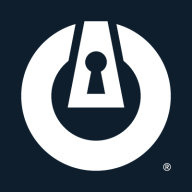

Check Point Security Management and ThreatLocker Zero Trust Endpoint Protection compete in the realm of cybersecurity solutions. Check Point seems to have the upper hand with its comprehensive feature set, though both have their strengths in different areas.
Features: Check Point Security Management is known for its centralized management, which simplifies policy management and threat prevention through firewall blades and URL filtering. Additionally, it offers application control and automation from a single console. ThreatLocker excels in endpoint protection with a focus on zero-trust architecture. Its application control, easy policy approval, and user-friendly management are notable features. Ring-fencing and selective elevation are valued for their robust security capabilities.
Room for Improvement: Check Point needs to enhance usability and multi-platform support while simplifying its policy management. Performance and stability improvements in logging are also necessary. ThreatLocker could improve its user interface and scalability in policy management. Enhanced integration with other systems and better configuration controls are desired.
Ease of Deployment and Customer Service: Check Point is often implemented in on-premises environments with mixed feedback on customer service, highlighting knowledgeable staff but needing faster problem resolution. ThreatLocker is praised for its versatile deployment, fitting well across cloud configurations, and for its proactive support team, though suggestions include better availability and training for smoother incident handling.
Pricing and ROI: Check Point offers premium solutions with high upfront costs, but long-term savings through centralized management provide a good ROI. ThreatLocker offers competitive pricing, highly regarded for its value proposition with flexible subscription models, aligning with diverse business needs. Both solutions provide satisfactory ROI, with Check Point noted for its extensive features justifying its cost.
I have seen a strong ROI from using Check Point Security Management through unified policy management, reduced misconfigurations, and faster incident response.
The time to resolve issues is very much better now with Check Point Security Management.
I have seen a hundred percent return on investment with Check Point Security Management.
If something were to happen without ThreatLocker, the cost would be huge, and thus, having it is definitely worth it.
The main return on investment is peace of mind, knowing that with ThreatLocker on any endpoint, it will almost always block all malicious code or exploits, even zero-day exploits.
It keeps malware, Trojans, and ransomware at bay.
We have partner support that helps us mitigate vulnerabilities reported by our infrastructure team.
The challenge was with drivers due to the size, and we had not provisioned the partition to the right size.
The customer support for Check Point Security Management is great.
They have been very responsive, helpful, and knowledgeable.
I would rate their customer support a ten out of ten.
Their support is world-class.
It can be a multi-domain Security Management server and can manage large or segmented environments with multiple domains or customers.
When you upgrade multiple times, you leave many files that are useless. They are dated, so it's always better to create a new machine every few versions, for example, three or four major versions.
Check Point Security Management's scalability is exceptional as it handles growth in users or devices very well.
I started off with just the servers, and within a month and a half, I set up the entire company with ThreatLocker.
It seems to primarily operate on the endpoints rather than at a central location pushing out policies.
I would rate it a ten out of ten for scalability.
Check Point Security Management is really stable, and I have not experienced any downtime or issues with reliability except for when we do upgrades.
The SmartConsole used to administrate the security management is somewhat unstable.
For five years, we have not had a problem.
Once deployed, it downloads the policies locally, so even if the computer doesn't have internet, it doesn't matter.
It has been very stable, reliable, and accessible.
When the logs are too heavy for the security management server, the CPU spike will be high, causing our management day-to-day activity to lag or become difficult.
I believe they can improve the management by allowing better API functionality because the API now is a little complicated, making it difficult to do automation.
Additionally, it crashes pretty regularly, so they could resolve the stability issues as well.
Controlling the cloud environment, not just endpoints, is crucial.
This is problematic when immediate attention is needed.
Comprehensive 24-hour log monitoring is a valuable enhancement for both business and enterprise-level users.
Since we are using it extensively, we get significant discounts during procurement.
Licensing is quite expensive.
We pay on a three-year base.
After conversations with other partners, it became clear we underpriced it initially, which caused most of our issues.
We are moving towards the Unified solution, where they basically bundle everything together, providing us better stability with the ability to bring in new product offerings without having to go back to the customer and say, 'This is going to cost you.'
I had a really good deal at the time, and it continues to be cost-effective.
Check Point Security Management has positively impacted my organization by providing centralized control, allowing us to manage all security policies and gateways from a single console, reducing complexity and saving time.
Check Point Security Management has helped my team save time, improve security, and reduce manual work significantly.
We can't work without Check Point because it provides the real visibility needed to manage the environment.
ThreatLocker Zero Trust Endpoint Protection Platform's ability to block access to unauthorized applications has been excellent.
It protects our customers.
The major benefit is fewer breaches overall, as nothing can be run without prior approval. This helps my company protect its data and secure itself effectively.
| Product | Market Share (%) |
|---|---|
| ThreatLocker Zero Trust Endpoint Protection Platform | 3.1% |
| Check Point Security Management | 0.7% |
| Other | 96.2% |


| Company Size | Count |
|---|---|
| Small Business | 37 |
| Midsize Enterprise | 28 |
| Large Enterprise | 41 |
| Company Size | Count |
|---|---|
| Small Business | 32 |
| Midsize Enterprise | 4 |
| Large Enterprise | 3 |
Check Point Security Management is an advanced security management platform for enterprises. The platform integrates all aspects of security. A single platform manages the entire infrastructure, from data centers to private/public cloud deployments.
Check Point Security Management is a reliable and easy-to-use security platform. It integrates all aspects of your security environment to strengthen the security posture without impairing productivity. The system has a layered policy model. This means the security policy can be separated into layers for network segmentation. Different administrators can manage different policies. The policy layer automates the tasks.
The platform is extensible, scalable, and integrates easily with orchestration systems and change management.
Basic Components of the Infrastructure
The smart console offers several advantages. Changes in security policies and logs can be done with a click. You can navigate from an item within a log to the policy. There are also built-in multi-language support and accessibility features.
1. Security Management Server: The server manages security gateways with set security policies and monitors security events on the network.
The automation server is an integrated part of the management server. The API server is active by default on servers with 4 GB of RAM or more and on standalone servers with 8 or more GB of RAM.
The automation server communicates with the management server the same way as the Smart Console. This architecture allows the same validation errors and warnings to be presented when using an automation session.
The same audit logs generated using the Smart Console are also generated using an automation session. If you have a multi-domain environment, there is only one automation server that monitors all the IP addresses of the multi-domain management server.
2. Security Gateway is placed at the edge of the network. It monitors and filters traffic and enforces security policies.
Logging, Event management, and Monitoring
With Check Point Security Management, logging, reporting, event management, and monitoring are integrated. The platform features widgets and chart templates that optimize visibility. One of the best features is the one-click exploration. This simplifies going from a general overview to specific event details.
Benefits of Check Point Security Management
The unified console also means a single policy for users, data, applications, and networks. The granularity control helps accelerate administration processes. This feature, together with automation, is key to achieving reduced operational overhead. Security teams can automate tasks and even create self-service security web portals with the Check Point Security Management platform.
Threat management is fully integrated, with reporting, logging, and monitoring all in one dashboard. This provides full visibility into the security of the network.
Security Management Suite
The Security Management Suite consists of the following modules:
Reviews from Real Users
A Network Security Engineer/Architect at a tech services company says, "The features we like and find the most valuable are the ways we can manage the policy, create objects, and drag and drop objects in our daily operation. It makes our daily operation on the firewall management much easier than going, for example, to one firewall, then going to the other."
"The management API is the best new feature for me. It allows us to further automate our customers' automated server ordering," says a System Engineer Network & Security at OTTO GmbH & Co KG.
A Senior Infrastructure Services Specialist at St.George Bank Limited adds that "The solution is ideal for use and deployment in a large infrastructure environment."
ThreatLocker Zero Trust Endpoint Protection Platform offers robust endpoint security through application control and allowlisting, safeguarding servers and workstations from unauthorized software execution.
ThreatLocker Zero Trust Endpoint Protection Platform provides extensive application control with features like ring-fencing and selective elevation, ensuring meticulous execution management. Offering learning mode and extensive support, it integrates threat detection and activity monitoring to enhance compliance, reduce costs, and bolster cybersecurity through alerts and approvals. Despite its strengths, there are areas for improvement in training flexibility, policy updates, and interface enhancements, along with challenges in handling non-digitally signed software. Deployed across environments, it works well with existing cybersecurity instruments for real-time threat prevention.
What are the top features of ThreatLocker?ThreatLocker Zero Trust Endpoint Protection Platform is widely implemented to safeguard IT infrastructures against unauthorized access and application use. In sectors where data security is paramount, this platform enables users to prevent unauthorized software installations and control device applications, ensuring real-time threat prevention and compliance with industry regulations.
We monitor all Advanced Threat Protection (ATP) reviews to prevent fraudulent reviews and keep review quality high. We do not post reviews by company employees or direct competitors. We validate each review for authenticity via cross-reference with LinkedIn, and personal follow-up with the reviewer when necessary.